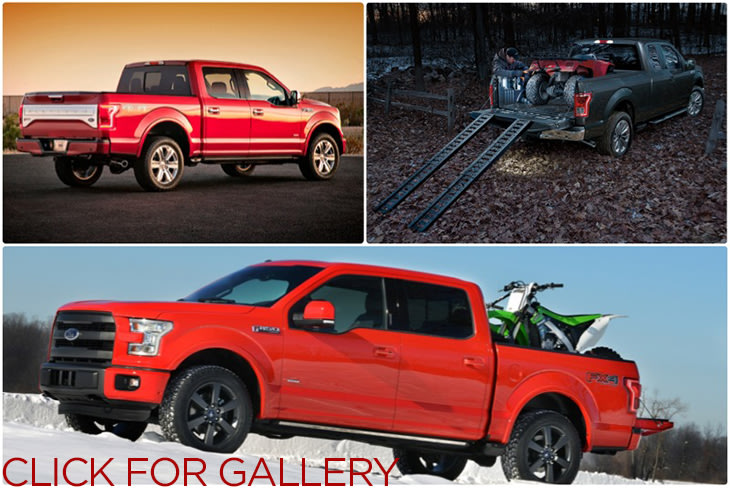
By Justin Hyde
This is the next version of the Ford F-150 pickup, the most profitable vehicle Ford sells and the most popular automobile in America. While it looks new, the biggest changes lie under the paint, where the body has been made from aluminum instead of steel — a costly yet revolutionary change that helps the new model shed 700 lbs. over the previous versions, and could give Ford years of dominance among truck buyers.
Think of it as "The Biggest Loser," pickup edition.
Under development for six years, Ford started almost from scratch in its designs — driven by a desire to future-proof its bellweather model against ever-increasing demands for fuel efficiency. And by making a radical switch to aluminum, Ford can then make other changes, like smaller engines, without weakening the F-150 or upsetting its loyal owners — at least in theory.

First, a bit about why aluminum's such a big deal: Many luxury cars use aluminum frames for lighter weight and more stiffness, including Jaguar, Audi and Land Rover. And a few mainstream models, including the current F-150, have aluminum hoods to shed a few pounds. But despite its rust-proof advantages, aluminum has never been the chief metal for vehicles because of its relatively higher cost versus steel and the different methods needed to form it (unlike steel that can be welded, aluminum melts at a lower temperature, and typically needs to be riveted or glued in most vehicles.)
Ford has tinkered with building aluminum vehicles for more than two decades, but the F-150 will likely outsell all other aluminum-heavy models in a single month, with more than 750,000 sold in the United States every year. To test its ideas about aluminum bodies, Ford arranged to give six F-150s with aluminum beds to customers at construction sites and mining companies — without their knowledge. After four rounds of testing, Ford struck on the combination of aluminum alloys and thicknesses it believes can be tougher than the current model.
The weight savings — which equal roughly 12 percent on a Super-Duty variant — drive other changes. The engine lineup gets shuffled, with the current 6.2-liter V-8 dropped. The base engine will be a smaller 3.5-liter non-turbocharged V-6, with a 5-liter V-8 and 3.5-liter Ecoboost twin-turbo as the top models. The new in-between option: a 2.7-liter V-6 Ecoboost turbo that Ford claims will offer as much power as buyers used to expect from a small V-8.
From a styling standpoint, the F-150's aluminum body brings a 21st-century update, from LED headlamps to a sculpted tailgate that can be lowered remotely from the key fob. Ford promises a heavy dose of new technology throughout the truck: 360-degree camera systems, moveable LED spotlights in the rearview mirrors and even hidden ramps underneath the bed that can be pulled out to load ATVs and motorcycles.
Ford will start selling the new F-150 later this year; it didn't release several key details, such as expected fuel economy or prices, but says the new truck will haul, tow and go farther on a tank of gas than the current model while within range of today's sticker prices. Pickup buyers tend to be conservative, and there will be some who doubt that an aluminum body can ever be as durable as a steel one. Given how much weight it's shed, the aluminum F-150 should give Ford dominance in truck fuel economy for years to come. It's radical, and a bit risky, but being the biggest loser may keep the F-150 a winner.
No comments:
Post a Comment